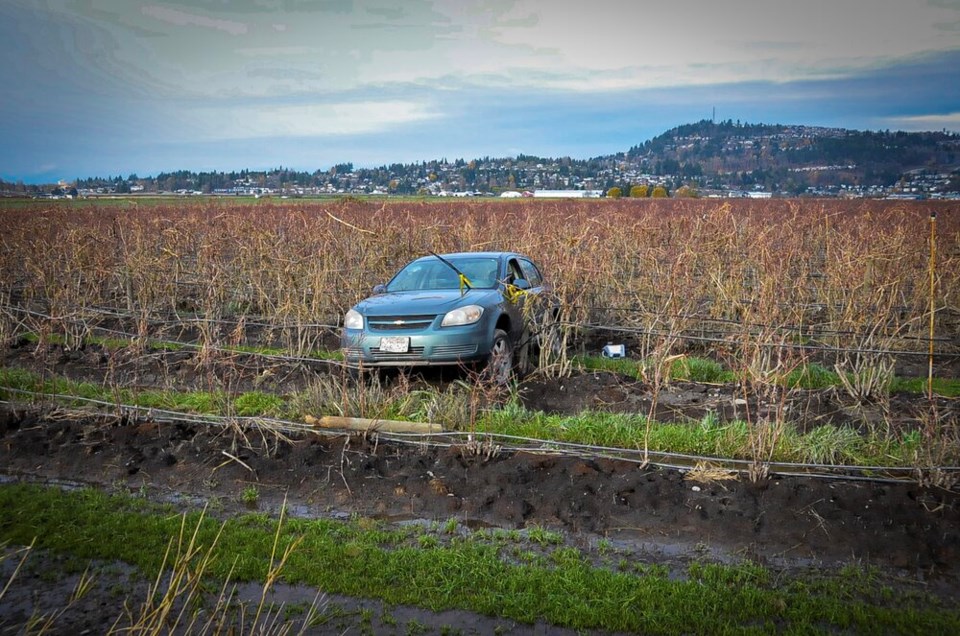The insured cost of the floods that rocked dozens of communities and devastated British Columbia’s highway system last year has climbed to $675 million, nearly a third higher than previously thought.
The new estimate, released Wednesday by Catastrophe Indices and Quantification Inc., makes the November 2021 floods the costliest weather disaster in B.C.’s history.
Most of the estimated losses come from business claims. Many affected residents, on the other hand, live in high-risk flood areas where residential flood insurance coverage is not available, said the Insurance Bureau of Canada (IBC).
"While the insured losses from the November flood events are increasing, it is clear that the overwhelming majority of costs for this disaster will be borne by government," said IBC vice-president of Pacific and Western Aaron Sutherland in a written statement.
That bill is expected to climb into the billions.
Climate scientists estimate the floods were made two to four times more likely due to climate change. Others point to the flooding and associated landslides as an acute symptom of unbridled logging.
According to IBC, the scale of the flooding is part of a longer term trend.
The IBC has been tracking climate-related insurance claims since the early 1980s. Between 1983 and 2008, the average annual losses paid out to Canadians because of natural catastrophic events sat at $422 million. Between 2009 and 2020, payouts on big claims more than quadrupled to $2 billion every year.
"It's clear the trend line is only going in one direction, and the direction is up," Sutherland told Glacier Media as floods peaked in November.
Understanding what risk people face by living in flood plains requires good maps. But the flood maps B.C. relies on to make such calls are decades out of date.
"The average age of a flood map in this province goes back to 1980. We need to start to layer the latest climate data," said Sutherland.
When those gaps are closed, some are concerned the risk to hundreds of thousands of homes could lead to a crisis in real estate prices.
A report released last October by the Canadian Institute for Climate Choices (CICC) found at least half a million buildings at risk of flooding are not identified on current government flood maps, and “virtually none of them show how climate change may affect the future risk of flooding,” noted the report.
The IBC is already in the process of transforming itself from an organization largely there to insure against fire, to one that's increasingly focused on flooding. But only a fraction of Canadian property owners understands the risk they are facing. A 2016 survey showed that roughly 45 per cent of Canadian homeowners have insurance that will pay for flood damage, when in fact, only 10 to 15 per cent are actually covered.
That risk is not shared equally across the country.
In B.C., the number of homes at risk of storm surge is projected to climb 44 per cent by the end of the century to nearly 70,000. That’s more than any other province in the country.
Metro Vancouver is a hot spot for such risk. Part of that is because of high property values — roughly $30 billion in home and building value sits within one metre of current sea level. But many municipalities in the region also face twin pressures from rising seas and a network of massive rivers.
Between 2070 and 2100, the region’s annual flood damages are expected to climb to $510 million annually, a 17-fold increase, under a low-emissions scenario; and up to $820 million annually, 27 times the current value, under a high-emissions scenario, according to the CICC report.
That’s all expected to filter down to individual homeowners. Fifty years from now, average individual property damage is projected to hit $4,400 per year in Metro Vancouver, more than seven times today’s cost.
The IBC is working with the federal and provincial governments on the Task Force on Flood Insurance and Relocation. The industry group has put forward a plan to create an affordable residential flood insurance program through a public-private model.
But no amount of insurance will solve the root of risks of flooding.
Sutherland says the only affordable way forward is to prevent the damage in the first place.
He says new approaches — whether through better building codes, better land planning to shift houses and businesses out of high-risk areas, or nature-based defences designed to absorb rising waters — need to be rolled out to protect communities.





